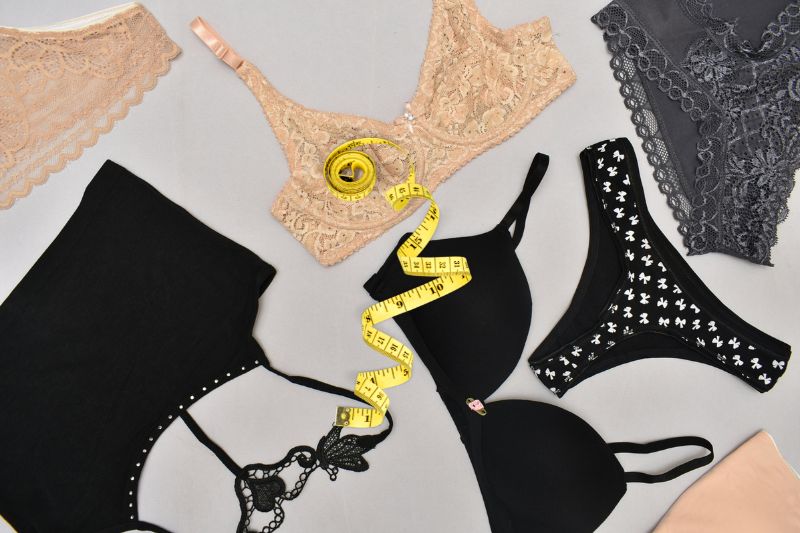Is there anything more uncomfortable than a bad-fitting bra? You may have the correct bust measurement but somehow end up with a bra that’s either too big or too small. How is it that you’re a D-cup according to UK bra size standards but an E-cup in Japan?
The right bra fit goes beyond aesthetics; it can improve your posture, relieve pressure on your shoulders, and even boost your confidence. With so many international sizing systems, though, it’s easy to feel lost. This guide will help you navigate bra sizing and find your ideal fit with Symmetrista’s unique approach.
Understanding International Bra Size Conversions
The common standards used are the US, UK, Europe (France and Italy have their own), Australia, and Japan measuring standards. Together, these standards form the international bra size conversion chart many women use today.
As you know, all these international sizes generally mention the band size followed by the cup size. They use numbers for the band size and letters for the cup size. So, a 34E bra simply means the band size is 34 while the cup size is E. However, the numbers and letters don’t always mean the same thing, which is where the confusion begins.
If you already know your bra size, here is a simple band and cup size comparison chart for easy reference:
Band Size Chart:

Cup Size Chart:

Find the Right Bra Size with Symmetrista
Bra sizing can feel complicated, especially when trying to convert between international standards. Many size charts use both centimeters and inches for band measurements, but Symmetrista’s size calculator exclusively uses centimeters to help you find the best fit without the need for conversions. Since our products are crafted to fit based on centimeter measurements, this ensures a more accurate and consistent sizing experience for you.
When using our size calculator, please ensure that your measurements are taken in centimeters. This not only aligns with Symmetrista’s bra design but also provides a straightforward, one-to-one sizing experience without the need for conversions.
If you’re familiar with inch-based sizes, you may find centimeter-only sizing an adjustment. Rest assured, we’ve designed our calculator to be as user-friendly and precise as possible, making it easy to find your exact size.
Key Points to Remember When Using the Symmetrista Size Chart
- Only Use Centimeters: Symmetrista’s size chart and calculator are optimized for centimeter measurements. Taking measurements in centimeters is the best way to get an accurate size recommendation.
- No Conversion Needed: Unlike other size charts that offer both centimeters and inches, Symmetrista’s calculator only uses centimeters. This approach removes the need for manual conversions, helping ensure a better fit.
- Check the Brand’s Sizing Guide First: When in doubt, follow Symmetrista’s guide or reach out to our support team. Our calculator and size chart were specifically designed to work together using centimeter-based sizing.

Help For Asymmetrical Breasts: Symmetrista’s Signature Bra
Breast asymmetry is incredibly common, with most women having some level of variation between their breasts. This natural difference can make finding a comfortable, supportive bra challenging, as most bras are designed for perfect symmetry. The Symmetrista Signature Bra, however, offers a unique solution with features specifically crafted to enhance comfort, support, and symmetry.
The Signature Bra is thoughtfully designed for women with asymmetrical breasts, combining premium materials with tailored features to provide a balanced, flattering fit.
Here’s what makes it special:
- Built-In, Customized Padding: Forget separate inserts! The Signature Bra includes built-in padding tailored for each cup, creating a naturally symmetrical appearance without extra accessories. This padding is designed to provide a seamless look under clothing so you can feel confident in any outfit.
- Individually-Tailored Cups for Customized Support: Each cup is individually shaped and sized, offering a custom fit for each breast. This thoughtful design goes beyond simply evening out the size; it provides tailored support and coverage that comfortably adapts to your unique shape, giving you a polished, symmetrical silhouette.
- Adjustable, Comfortable Straps: The Signature Bra’s straps are fully adjustable, making it easy to customize the fit for varying shoulder heights and breast positioning. Wide and supportive, these straps prevent digging into your shoulders, ensuring long-lasting comfort without compromising on aesthetics.
- Durable, Luxurious Fabrics: Made with high-quality, long-lasting materials, the Signature Bra maintains its shape and support through regular wear and washing. The luxurious fabric feels gentle on the skin, while the bra’s precise construction ensures it remains dependable over time.
Say goodbye to the frustration of finding a bra that fits and supports both sides equally. With the Signature Bra, you can enjoy a balanced, comfortable fit that enhances your natural shape—no extra inserts or adjustments required. Embrace the confidence of a custom-fitted look and feel unrestricted, beautiful, and completely yourself!
Conclusion
Finding the right bra doesn’t have to be a struggle. With Symmetrista’s unique, centimeter-based sizing approach, you can enjoy a perfectly tailored fit that’s comfortable, supportive, and made just for you. Say goodbye to the frustration of inconsistent sizing—our precision-focused size calculator is here to help you achieve a fit that feels like it was custom-made.
Take a few moments to measure yourself in centimeters and discover your true size with our easy-to-use calculator. The right fit can transform your comfort, posture, and confidence, making every day more enjoyable.
Explore our bra collection to find styles that combine luxury fabrics, supportive designs, and a commitment to symmetry. Symmetrista’s bras are crafted to support and celebrate your unique shape, allowing you to experience true comfort and style—without compromise.
Ready to feel the difference? Take your measurements, try our size calculator, and step into the world of Symmetrista for a bra shopping experience that’s as enjoyable as it is rewarding. Discover your perfect fit today!

